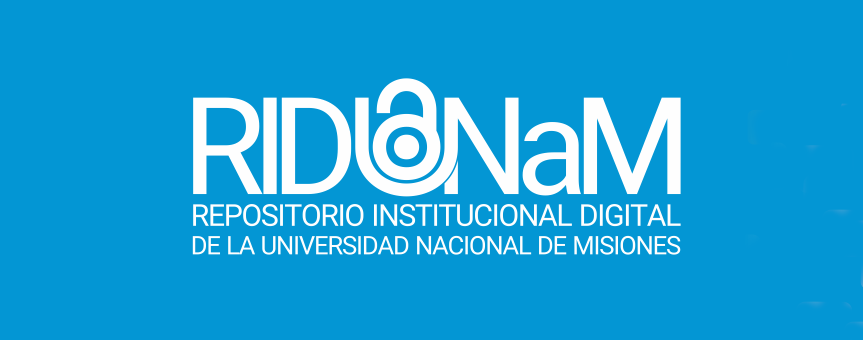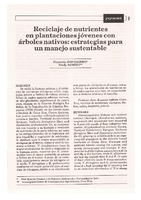Reciclaje de nutrientes en plantaciones jóvenes con árboles nativos : estrategias para un manejo sustentable
Abstract
Se midió la biomasa arbórea y el contenido de nutrientes (nitrógeno, calcio, magnesio, potasio y fósforo) de ramas, tronco y follaje de cuatro especies arbóreas nativas, en una plantación experimental de cuatro años, situada en la Estación Biológica La Selva, de la Organización de Estudios Tropicales (OTS) situada en las tierras bajas atlánticas de Costa Rica, Centro América. Las cuatro especies Stryphnodendron excelsum Harms, Vochysia hondurensis Sprague, Vochysia ferruginea Mart and Hyeronima alchorneoides (O), se compararon con respecto a su biomasa y contenido de nutrientes de la parte arbórea, así como a los compartimentos de la hojarasca del piso (mantillo) y vegetación del sotobosque.
S. excelsum tuvo la mayor acumulación de nitrógeno en el tronco, ramas y total de biomasa arbórea. V. hondurensis tuvo la mayor acumulación de calcio y magnesio en la biomasa aérea, mientras que H. alchorneoides tuvo el mayor contenido de potasio y fósforo en el tronco. A pesar de su contenido relativamente menor de nitrógeno en el tejido, V. ferruginea y H. alchorneoides mostraron un mayor potencial para el reciclaje de nitrógeno, debido a su distribución más pareja de nitrógeno en el tronco, ramas y follaje. La acumulación de nutrientes en el sotobosque fue muy baja, en comparación con la biomasa arbórea y el mantillo. Aboveground-tree biomass artd nutrient content (nitrogen, phosphorus, calcium magnesium and potassium) were measured in 4-year-old stands of four indigenus tree species: Stryphnodendron excelsum Harms, Vochysia hondurensis Sprague, Vochysia ferruginea Mart and Hyeronima alchorneoides (O), growing on infertile soils in an experimental plantation in the Atlantic humid lowlands of Costa Rica. Biomass and nutrient content among the species, and among above-ground tree biomass. V. hondurensis had the highest accumulation of Ca and Mg in the biomass, while H. alchorneoides had the highest stem K and P. In spite of their relatively lower N tissue concentrations, V. ferruginea and H . alchorneoides showed a high potential for N recycling due to its more even distribution of N in stems branches and leaves. Nutrient accumulation by the understory represented a minar component in comparison with above-ground tree tissue and the forest-floor litter.
Collections
- Revista Yvyraretá [360]
The following license files are associated with this item:




